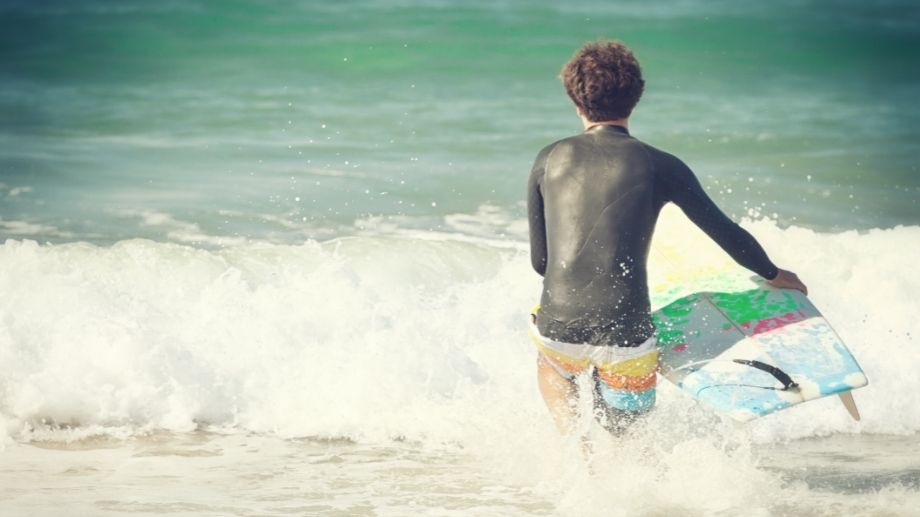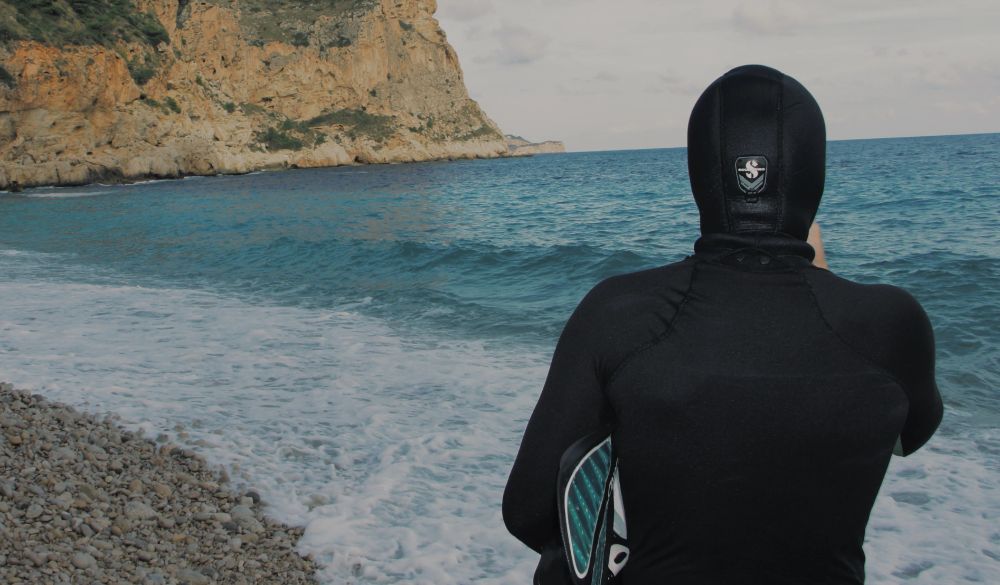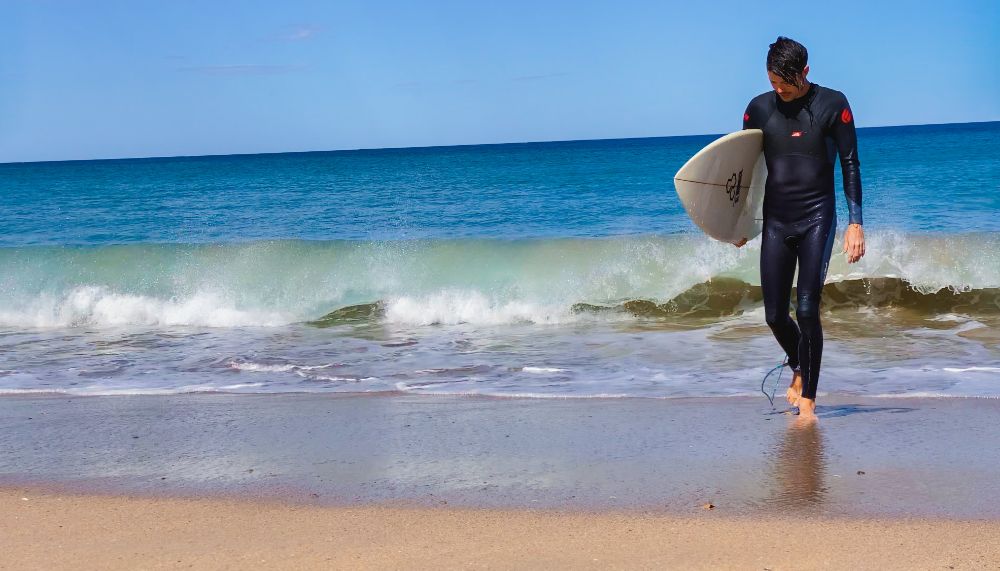A rash vest is an excellent investment if you want to be protected from harmful UV rays as you enjoy your time in the sun, chafing, and the harsh surface of your surfboard. But should you wear a rash guard under your wetsuit and will it keep you warmer?
Most surfers and swimmers will avoid wearing rash guards under their wetsuit as it adds water weight, restricts movement and doesn't provide extra warmth unless it's insulated. However, rash guards can sometimes help with chafing and insulated rash guards do keep you warmer in your wetsuit.
If you want to find out more about whether or not you should invest in a good rash guard to wear under your wetsuit, read on. We’ll take a look at some common uses of a rash guard and we’ll see why it may be useful to wear under your wettie.
What Is a Rash Guard?

A rash guard is a special t-shirt, designed primarily to protect from UV rays and chafing. It can come in several different varieties. You can get one with short sleeves, long sleeves, or no sleeves at all. A rash guard is made from spandex and nylon or polyester.
The primary role of a rash guard is to protect you from UV rays. Unless it is made of neoprene a rash guard will not keep you warm. In fact, in windy weather a rash guard can actually make you colder.
A rash guard will also provide you with protection again chafing/rashes when surfing. It can also add a layer of protection for your skin when diving that can minimize your chances of getting cut on rocks or reefs.
Some rash guards are made from neoprene which is insulated with millions of tiny nitrogen bubbles. These rash vests can keep you warm and a generally good for water temperatures that are too hot for a full wetsuit but too cold to just wear boardshorts.
As you can see, a rash guard is a handy piece of clothing for a surfer, diver, or snorkeler. It is especially useful when it’s too hot to wear a full wetsuit. Hot as it might be, you still need protection from the sun and the scratches your board can make on your skin.
Will a Rash Guard Keep You Warm Under Your Wetsuit?

A lot of people wear rash guards under their wetsuits because they believe this will keep them warmer. But do rash guards actually keep you warm under your wetsuit?
A standard rash guard will rarely keep you warmer under your wetsuit because they aren't insulated. It'll hold more cold water which can cool down your body faster. The exception to this is neoprene thermal rash guards which do keep you warm under your wetsuit.
Another exception to this is when your wetsuit doesn't fit you properly and a rash shirt can make the wetsuit tighter so less water gets in through the neck and wrist openings. But ideally you should get a wetsuit that fits you really well.
If you’re looking for something that will offer protection against the cold without compromising your mobility, opt for a thermal rash guard. A thermal rash guard may be perfect when the weather is too hot for a full wetsuit, but it’s still not hot enough for a regular rash guard.
Remember, wetsuits don't keep you dry and they let in a layer of water. Many people think this layer of water keeps you warm but it doesn't. Your body actually has to expend energy to warm up this layer of water and more often than not the less water the warmer you'll be. Which is one reason dry suits are often warm in extremely cold water.
A regular rash guard worn under your wetsuit will absorb water which your body will then have to heat up. This can make you colder in your wetsuit instead of warmer.
So, even though a typical rash guard won’t keep you warm, you can find a compromise between a wetsuit and a standard rash guard.
When Should You Wear a Rash Guard Under a Wetsuit?
A rash guard is not necessarily meant to be worn under a wetsuit, but it is possible to wear it as such. There are several reasons why you might want to do that:
- For added insulation
- For protection and comfort
- For hygiene
- And for decency
Added Insulation

Even though a rash guard on its own won’t help you much with the cold, it might be an excellent addition to your wetsuit if you wear it as a base layer. Those extra few millimeters may spell the difference between being too cold and just fine, especially when your wetsuit doesn't fit quite right.
You can get a thermal rash guard for even more insulation. This type of rash guard is thicker and designed to keep you warm under your wetsuit. It also comes in several thicknesses, so you have a wide variety of options.
Keep in mind that if you opt for a thicker rash guard, you might need a bigger wetsuit. If your wetsuit doesn’t fit snuggly, it will not provide you optimal protection, and it will thus serve no purpose.
It can be difficult to stretch a tight fitting wetsuit without ruining the stitching or neoprene of the wetsuit. So make sure your wetsuit is big enough to fit the thermal rash guard.
It's also important to note that the more layers you wear the more restricted you'll be and swimming or paddling can become harder. You may be better off adding a wetsuit hood, booties or gloves instead of a rash guard if you're looking to stay warmer in the water.
Protection and Comfort
Some divers and surfers choose to go commando when wearing a wetsuit, but this may not be the best idea. A wetsuit can get quite uncomfortable and chafe your skin, especially on the armpits, crotch, and neck.
A way to mitigate this is to wear a rash guard under your wetsuit. A rash guard can be a good option due to its thinness. It’s thin enough to provide adequate protection from the chafing of your wetsuit without messing up the fit of your wetsuit.
For even more protection, you can get yourself a full-body rash guard.
You do have to be careful when putting your wetsuit on with a rash guard underneath as it can bunch up much like when you try to wear board shorts under your wetsuit. If you want to avoid chafing take care to avoid your rash vest bunching up under your wetsuit.
Hygiene
This part can be essential if you’re renting your wetsuit. You can never know if the person who used it before you went commando in it or when it was cleaned last time. Since it’s better to be safe than sorry, it’s best to put on a rash guard underneath to give you a layer of protection from any bacteria.
Also, keep in mind that some people even pee in their wetsuits as a way to keep themselves warm. This is probably the most valid reason to wear an additional layer when renting a wetsuit.
Decency
As a diver or surfer, you will most likely have to change in a public place, at least occasionally. This is especially true in a tropical area, where it’s probably not the best idea to wear a warm wetsuit when you’re not in the water.
A wetsuit can also be notoriously difficult to take off, so it’s not something you can quickly do behind a towel.
If you often surf or dive in places where privacy isn’t guaranteed, you can use a rash guard as an additional layer of protection when you’re changing.
This is especially true for full-body rash guards, which will also prevent your nether regions from being seen. Some people prefer to wear rash guards as they feel it looks better when changing in and out of their wetsuit.
Some females may want to wear a rash vest for decency reasons or if they've forgotten their swimmers or don't have a swimmer top. Males might also want to wear a rash vest under their wetsuit for similar reasons.
Final Thoughts
While wearing a rash guard under your wetsuit is not a must, it can be a wise idea. That’s primarily because it offers additional protection and insulation against not just from the weather, but also from the wetsuit itself. Apart from that, it is useful for your hygiene and decency when taking off a wetsuit in public.




